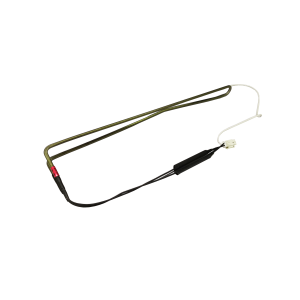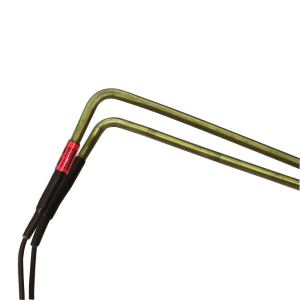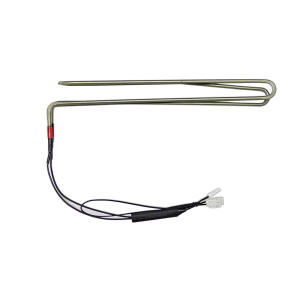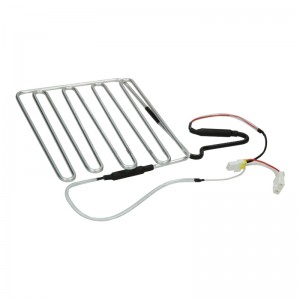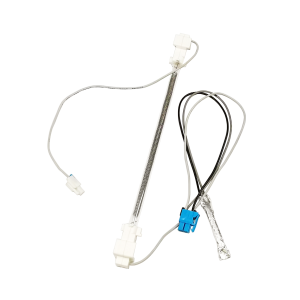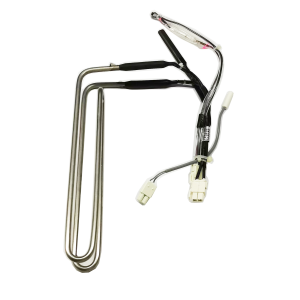220V Stainless Steel Heating Tube with NTC Sensor for Refrigerator Defrosting Heater BCD-432
Product Parameter
| Product Name | 220V Stainless Steel Heating Tube with NTC Sensor for Refrigerator Defrosting Heater BCD-432 |
| Humidity State Insulation Resistance | ≥200MΩ |
| After Humid Heat Test Insulation Resistance | ≥30MΩ |
| Humidity State Leakage Current | ≤0.1mA |
| Surface Load | ≤3.5W/cm2 |
| Operating Temperature | 150ºC(Maximum 300ºC) |
| Ambient temperature | -60°C ~ +85°C |
| Resistant voltage in water | 2,000V/min (normal water temperature) |
| Insulated resistance in water | 750MOhm |
| Use | Heating Element |
| Base material | Metal |
| Protection class | IP00 |
| Approvals | UL/ TUV/ VDE/ CQC |
| Terminal type | Customized |
| Cover/Bracket | Customized |
Applications
- Widely used for defrosting in refrigerators, deep freezers etc.
- These heaters can also be used in dry boxes, heaters and cookers and other middle temperature applications.
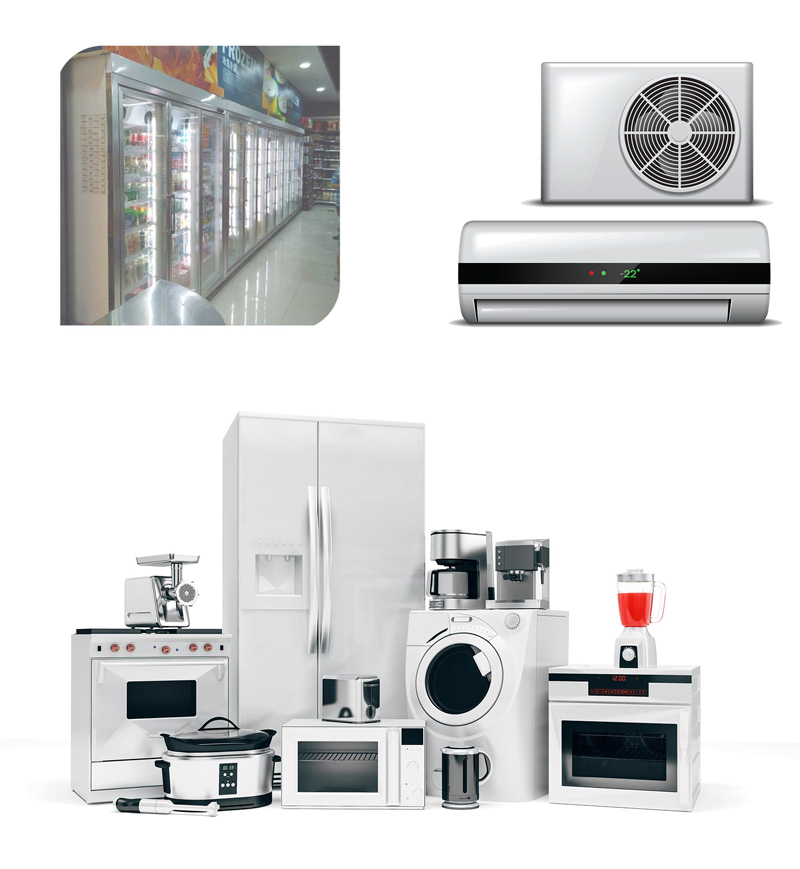
Product Structure
Stainless Steel Tube heating element uses steel pipe as heat carrier. Put heater wire component in Stainless Steel Tube to form different shape components.

Features
External metal material, can be dry burning, can be heated in water, can be heated in corrosive liquid, adapt to many external environment, a wide range of application;
The interior is filled with high temperature resistant insulating magnesium oxide powder, has the characteristics of insulation and safe use;
Strong plasticity, can be bent into various shapes;
With a high degree of controllability, can use different wiring and temperature control, with a high degree of automatic control;
Easy to use, there are some simple stainless steel electric heating tube in use only need to connect the power supply, control the opening and tube wall can be;
Easy to transport, as long as the binding post is well protected, don't worry about being knocked or damaged.

Why is the defrosting of a refrigerator necessary?
Some refrigerators are 'Frost free’, others, particularly older refrigerators require occasional manual defrosting.
The component in your fridge that gets cold is called an evaporator. The air in your refrigerator cycles through the evaporator. Heat is absorbed in the evaporator and cold air is expelled.
In most situations people want the contents of their refrigerator to be in the range of 2–5°C (36–41°F). To achieve these temperatures, the evaporator temperature is sometimes cooled to below the freezing point of water, 0°C (32°F).
Air contains water vapour. As the air in your refrigerator comes into contact with the evaporator, the water vapour condenses out of the air and water droplets form on the evaporator.
In fact, everytime you open your fridge, the air from the room enters introducing more water vapour into the fridge.
If the evaporator temperature is above the freezing temperature of water, the condensate that forms on the evaporator will drip down to a drain pan, where it is drained out of the fridge.
However, if the evaporator temperature is below the freezing temperatures of water, the condensate will turn to ice and stick to the evaporator. Over time, an accumulation of ice can form. Eventually this can block the circulation of the cold air through your fridge so while the evaporator is cold, the contents of the fridge are not as cold as you want them to be because the cold air cannot circulate effectively. This is why defrosting is required.
There are different methods of defrosting, of which the simplest is to not run the refrigerator’s compressor. The evaporator temperature rises and the ice starts to melt. Once the ice has melted off the evaporator, your fridge is defrosted and with proper airflow restored, it is able to cool your foodstuffs to your desired temperature again.
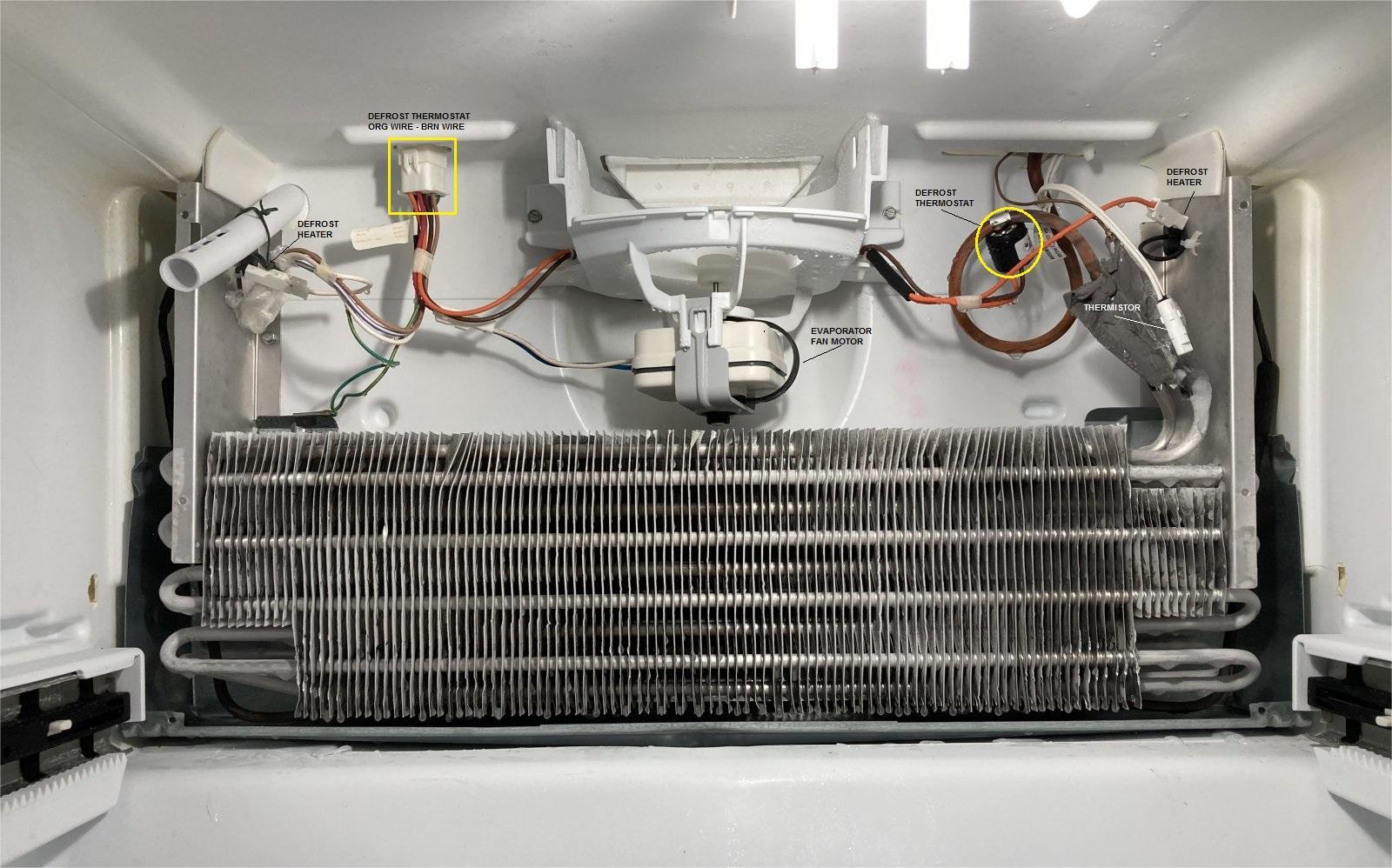
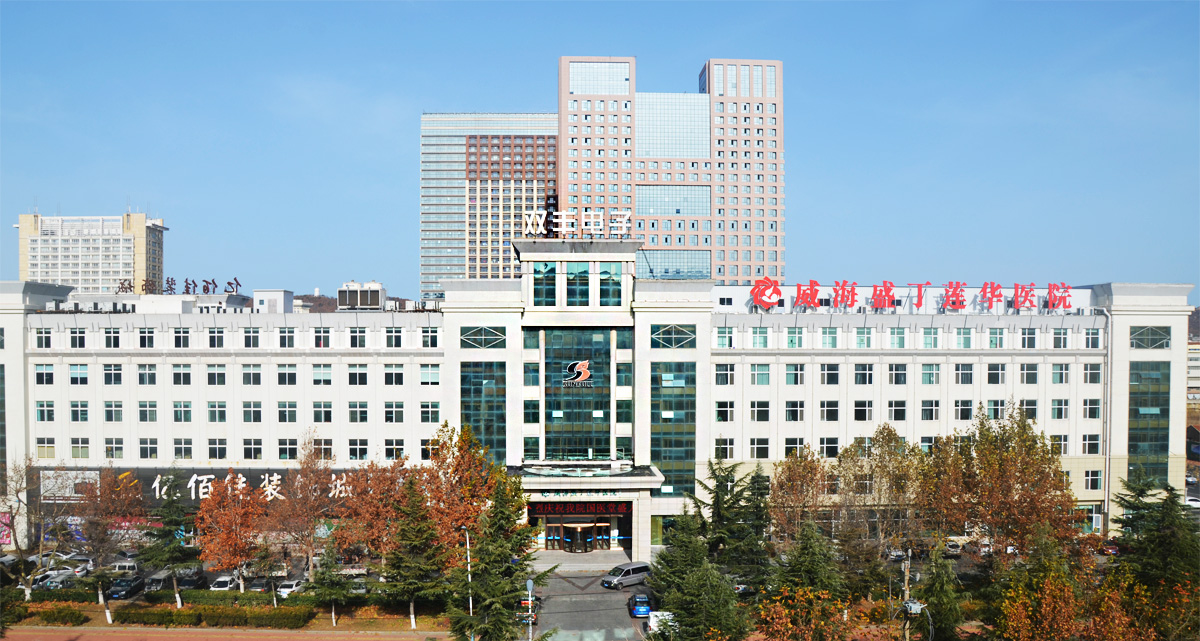 Our product has passed the CQC,UL,TUV certification and so on, has applied for patents accumulatively more than 32 projects and has obtained scientific research departments above the provincial and ministerial level more than 10 projects. Our company has also passed the ISO9001 and ISO14001 system certificated, and national intellectual property system certificated.
Our product has passed the CQC,UL,TUV certification and so on, has applied for patents accumulatively more than 32 projects and has obtained scientific research departments above the provincial and ministerial level more than 10 projects. Our company has also passed the ISO9001 and ISO14001 system certificated, and national intellectual property system certificated.
Our research and development and production capacity of the company’s mechanical and electronic temperature controllers have ranked in the forefront of the same industry in the country.


